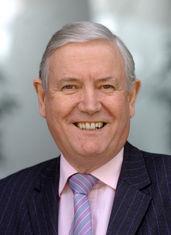
Grower levy charges could legally increase by up to 50 percent under the powers of the new levy board structure when it comes into operation next year.
The fact that they are highly unlikely to go for the maximum in the first year has not wholly dampened the concern for growers, as the powers are now there to use particularly in regard to additional costs.
The general consensus is that Levy Board UK, through its Sector Companies, is highly unlikely to demand the maximum rate and antagonise the industry in its first year.
Philip Hudson, NFU chief horticultural adviser, said the industry is at the consultative stage, with no decision taken with the new individual sector companies.
As yet there is no evidence that the maximum will be imposed.
But Hudson told Commercial Grower that there needed to be much more clarification on the matter. He could not understand why they were proposing 0.75 percent of adjusted sales, up from the current 0.5 percent in the first place, as has just been published in The New Levy Order 2007. “Any increase would set alarm bells ringing in our industry at the present time,” he said.
Martin Beckenham of the Horticultural Development Council confirmed that the 0.5 percent levy raised in 2005-06 amounted to £4.18 million. A raised levy rate of 0.75 percent would have raised £6.27 million annually as a maximum allowed charge.
“The rate of levy to be charged each year has to be approved by the minister and justification provided for why that rate is required,” he said.
Based on their current operations he did not foresee that any increase was needed at present.
What concerns the industry is that the setting up cost of Levy Board UK has to be met, but at the same time this is supposed to have no impact in the overall cost to growers, an issue disputed by growers.
The additional costs of Levy Board UK would be offset by savings in the sector companies. Since HDC is regarded as one of the most efficient boards under the current system, both in the collection and use of its funds for R&D, it is difficult to assess where top end administrative costs would come from, unless the current rate of levy was increased.
The HDC has kept the current levy rate of 0.5 percent since 1990.
If the current rate were to remain the same but HDC were required to pay a proportion of Levy Board UK’s setting up costs, then the only option for new HDC would be to reduce its service to the horticultural industry.
So with an increased maximum it gives the HDC Board flexibility to enable it to meet various costs without restricting its ability to deliver the programme required by the industry, according to Beckenham.
John Bridge, chairman of Levy Board UK (pictured) assured an audience at the Guild of Agricultural Journalists last week that the levy monies would be collected in the same way as they are now, at least for the time being, and would be ring fenced to go to the individual boards.
He also assured the horticultural industry that research and development would remain a significant part of the restructured levy board system.